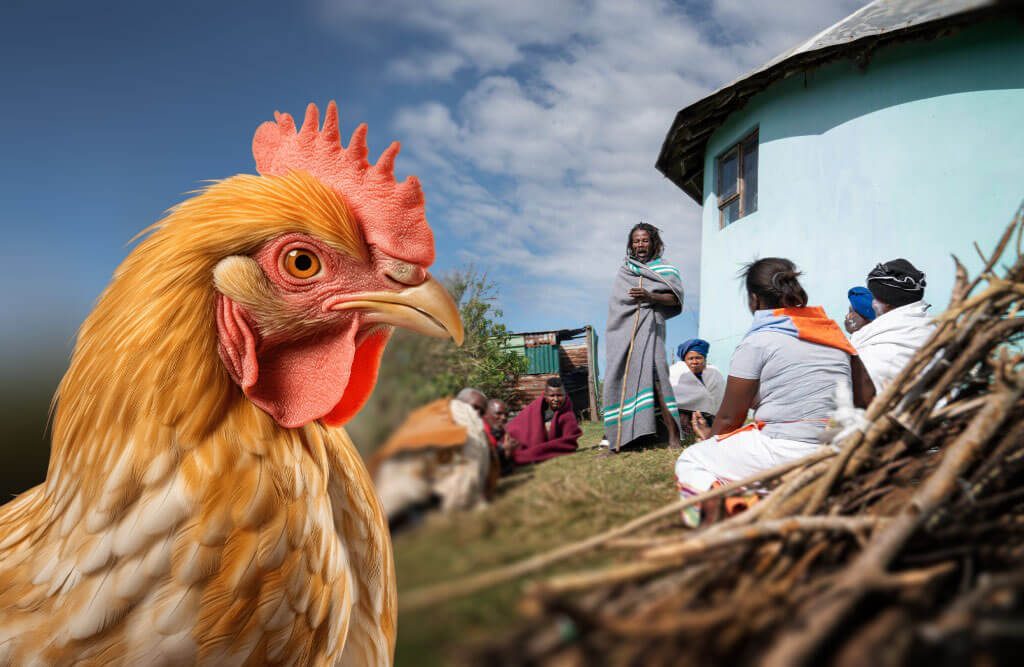
Poultry farming is an age-old practice that is the most common. Apart from conventional agricultural practices, services like poultry farming provide additional income to families. Many people in rural areas face difficulties in reaching banks and financial institutions, so they turn towards such activities. This allows them to invest their savings and earn additional income when needed economically. Scientific poultry farms, which control poultry farming, are costly, and most farmers find it expensive. Benefits of Poultry Farming for Rural Communities Poultry farming provides additional income to rural communities. In contrast to foreign breeds, indigenous poultry serves as a good mother, diligently incubating its eggs and caring for its chicks. It roams with its chicks, gathering food for them. Poultry plays a crucial role in family health and nutrition. Additionally, it contributes to entertainment, such as cockfighting, and serves as a special attraction during events like weddings and festivals.
In the rural environment of India, women contribute 74 percent to animal husbandry. Despite the efforts of backyard poultry in gathering food through free-ranging, it is not sufficient for their egg or meat production needs. This is the reason why backyard poultry in rural areas is often neglected in comparison to commercial farm poultry. It takes approximately six months for indigenous hens to produce one kilogram of eggs. Due to the lack of separate arrangements for hens laying eggs, some infertile eggs remain, leading to the production of fewer chicks. In rural settings, where the poultry is not safeguarded from factors like cold, rain, various diseases, predators such as foxes, dogs, and jackals, the mortality rate among chicks is significantly higher. The lack of a separate arrangement for hens laying eggs results in the inability to produce chicks from some unfertilized eggs. Poultry farmers often do not incur significant expenses on their poultry, nor do they keep track of the profits obtained from it.
Poultry farming is a modern and profitable agricultural trend that is providing significant benefits in rural areas. Along with this, it is enhancing the economic self-reliance of farmers both collectively and individually. Poultry farming not only ensures self-sufficiency for farmers but also offers them a new source of income in the market.
The incubator system is a technology that enhances the process of egg-laying in chickens. This technology ensures the safety and adherence to proper standards for eggs. Poultry farmers benefit from this by receiving secure and healthier chicks capable of laying high-quality eggs. Smart Cabin for Poultry Farming Experienced farmers have practiced the use of smart cabins, making poultry capable of laying eggs safely. The cabin is designed with specific dimensions and shapes to ensure that chickens can lay eggs securely. It includes sensors that prevent eggs from breaking. Unique Production Methods: New technologies have also improved the production process. By employing unique production methods, farmers can become better and more efficient producers. This results in increased production and higher income, strengthening their economic position.
Some species of chicken: This chicken lays approximately 30 to 40 eggs per year and reaches a body weight of one kilogram in 6 to 8 months. Raised for both meat and eggs, it is known for its highly nutritious and delicious meat. Typically, it is reared in open spaces around the courtyard and the house, resulting in lower egg production and slower physical growth. In the market, its price ranges from 5 to 6 INR per egg and 130 to 140 INR per kilogram of live weight. Broiler Chicken Provided with feed and water around the clock at home, the broiler chicken is ready for consumption within 24 hours. It is raised primarily for meat production. Within one and a half months, it attains a weight of approximately 1.5 kilograms, exhibiting rapid physical growth. Its market price ranges from 90 to 100 INR per kilogram. Layer Chicken: This chicken breed is known for higher egg production with slower physical growth. Raised for egg-laying purposes, it is kept in the house 24 hours a day with continuous access to feed and water. In the market, the price of its eggs ranges from 2 to 3 INR per egg.
Hen house arrangement: A hen lays 30-40 eggs in a year. Some eggs do not contain embryos but the remaining 20-22 eggs hatch into chicks. A good chicken shelter protects from cold, rain, hot sun and wild animals, and having a shelter makes it easier to feed, water and feed the chickens.
Hatching system: It is very important to make separate arrangements for the hens that hatch eggs. For this, appropriate number of baskets made of bamboo should be used so that the eggs can be protected from breakage. A coop of approximately 1 square feet and 6-9 inches deep is sufficient for 5 chickens. Eggs will not hatch by laying para in this basket.